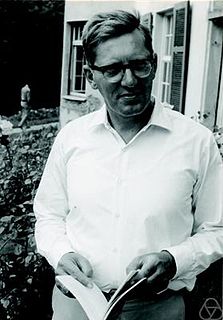See also
Surname list
This page lists people with the surname de Bruijn. If an internal link intending to refer to a specific person led you to this page, you may wish to change that link by adding the person's given name(s) to the link.
De Bruijn is a Dutch surname meaning "the brown". Notable people with the surname include:
In mathematics, de Bruijn may refer to one of the following topics named after Nicolaas Govert de Bruijn:
The de Bruijn–Newman constant, denoted by Λ and named after Nicolaas Govert de Bruijn and Charles M. Newman, is a mathematical constant defined via the zeros of a certain function H(λ, z), where λ is a real parameter and z is a complex variable. More precisely,
In programming language theory and proof theory, the Curry–Howard correspondence is the direct relationship between computer programs and mathematical proofs.
Brouwer is a Dutch and Flemish surname. The word brouwer means 'beer brewer'.

In graph theory, a critical graph is a graph G in which every vertex or edge is a critical element, that is, if its deletion decreases the chromatic number of G. Such a decrease cannot be by more than 1.

In combinatorial mathematics, a de Bruijn sequence of order n on a size-k alphabet A is a cyclic sequence in which every possible length-n string on A occurs exactly once as a substring. Such a sequence is denoted by B(k, n) and has length kn, which is also the number of distinct strings of length n on A. Each of these distinct strings, when taken as a substring of B(k, n), must start at a different position, because substrings starting at the same position are not distinct. Therefore, B(k, n) must have at leastkn symbols. And since B(k, n) has exactlykn symbols, De Bruijn sequences are optimally short with respect to the property of containing every string of length n at least once.

Nicolaas Govert (Dick) de Bruijn was a Dutch mathematician, noted for his many contributions in the fields of analysis, number theory, combinatorics and logic.

Tatyana Pavlovna Ehrenfest, later van Aardenne-Ehrenfest, was a Dutch mathematician. She was the daughter of Paul Ehrenfest (1880–1933) and Tatyana Alexeyevna Afanasyeva (1876–1964).
Erdős or Erdos is a Hungarian surname which may refer to:
Schouten is a surname of Dutch origin. It generally has an occupational root, where the forebear was a schout, but can also be patronymic, as Schoute once was used as a given name. The name is quite common in the Netherlands, ranking 37th in 2007. Variations include Schout, Schoute, Schoutens, Scholten and Scholte. People with this surname include:
In mathematical logic, the De Bruijn index is a tool invented by the Dutch mathematician Nicolaas Govert de Bruijn for representing terms of lambda calculus without naming the bound variables. Terms written using these indices are invariant with respect to α-conversion, so the check for α-equivalence is the same as that for syntactic equality. Each De Bruijn index is a natural number that represents an occurrence of a variable in a λ-term, and denotes the number of binders that are in scope between that occurrence and its corresponding binder. The following are some examples:
In mathematical logic, the De Bruijn notation is a syntax for terms in the λ calculus invented by the Dutch mathematician Nicolaas Govert de Bruijn. It can be seen as a reversal of the usual syntax for the λ calculus where the argument in an application is placed next to its corresponding binder in the function instead of after the latter's body.
In mathematics, infinitary combinatorics, or combinatorial set theory, is an extension of ideas in combinatorics to infinite sets. Some of the things studied include continuous graphs and trees, extensions of Ramsey's theorem, and Martin's axiom. Recent developments concern combinatorics of the continuum and combinatorics on successors of singular cardinals.
Meijer is a Dutch surname. It refers to a profession similar to a bailiff or steward. It originates from the Latin word maior and is often rendered Meyer abroad.
In graph theory, the De Bruijn–Erdős theorem relates graph coloring of an infinite graph to the same problem on its finite subgraphs. It states that, when all finite subgraphs can be colored with colors, the same is true for the whole graph. The theorem was proved by Nicolaas Govert de Bruijn and Paul Erdős (1951), after whom it is named.
De Bruyn is a Dutch and Afrikaans surname. "Bruyn" or "bruijn" is an archaic spelling of "bruin", meaning "brown". People with the name include:
In incidence geometry, the De Bruijn–Erdős theorem, originally published by Nicolaas Govert de Bruijn and Paul Erdős (1948), states a lower bound on the number of lines determined by n points in a projective plane. By duality, this is also a bound on the number of intersection points determined by a configuration of lines.
The De Bruijn–Erdős theorem may refer to:

Cornelis Gerrit Lekkerkerker was a Dutch mathematician.
Nicolaas is the Dutch equivalent of the masculine given name Nicholas. Before the 19th century the name was also written Nicolaes, while Nikolaas is an uncommon variant spelling. Most people with the name use a short form in daily life, like Claas, Claes, Klaas, Nico, and Niek.